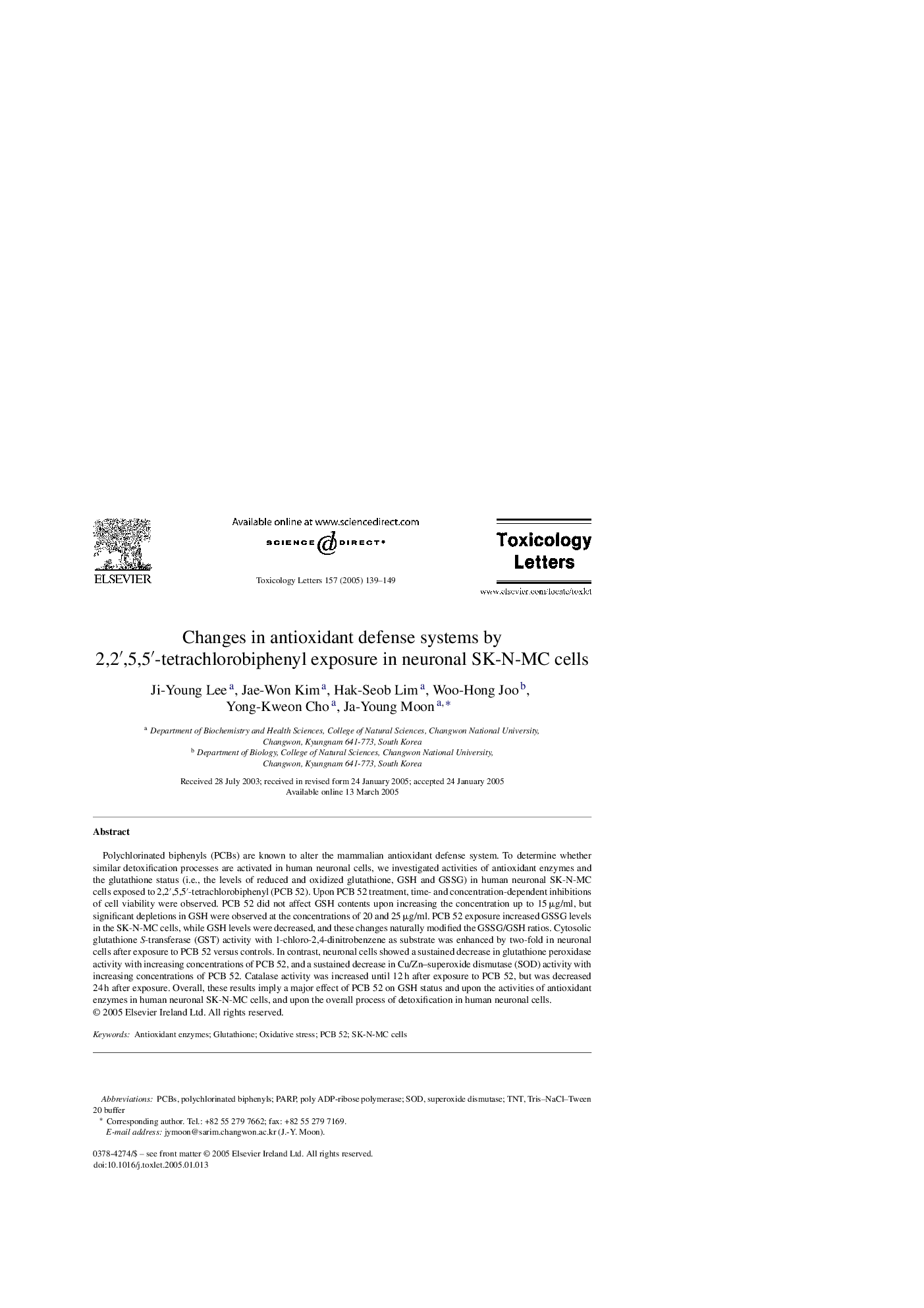| Article ID | Journal | Published Year | Pages | File Type |
|---|---|---|---|---|
| 9036598 | Toxicology Letters | 2005 | 11 Pages |
Abstract
Polychlorinated biphenyls (PCBs) are known to alter the mammalian antioxidant defense system. To determine whether similar detoxification processes are activated in human neuronal cells, we investigated activities of antioxidant enzymes and the glutathione status (i.e., the levels of reduced and oxidized glutathione, GSH and GSSG) in human neuronal SK-N-MC cells exposed to 2,2â²,5,5â²-tetrachlorobiphenyl (PCB 52). Upon PCB 52 treatment, time- and concentration-dependent inhibitions of cell viability were observed. PCB 52 did not affect GSH contents upon increasing the concentration up to 15 μg/ml, but significant depletions in GSH were observed at the concentrations of 20 and 25 μg/ml. PCB 52 exposure increased GSSG levels in the SK-N-MC cells, while GSH levels were decreased, and these changes naturally modified the GSSG/GSH ratios. Cytosolic glutathione S-transferase (GST) activity with 1-chloro-2,4-dinitrobenzene as substrate was enhanced by two-fold in neuronal cells after exposure to PCB 52 versus controls. In contrast, neuronal cells showed a sustained decrease in glutathione peroxidase activity with increasing concentrations of PCB 52, and a sustained decrease in Cu/Zn-superoxide dismutase (SOD) activity with increasing concentrations of PCB 52. Catalase activity was increased until 12 h after exposure to PCB 52, but was decreased 24 h after exposure. Overall, these results imply a major effect of PCB 52 on GSH status and upon the activities of antioxidant enzymes in human neuronal SK-N-MC cells, and upon the overall process of detoxification in human neuronal cells.
Keywords
Related Topics
Life Sciences
Environmental Science
Health, Toxicology and Mutagenesis
Authors
Ji-Young Lee, Jae-Won Kim, Hak-Seob Lim, Woo-Hong Joo, Yong-Kweon Cho, Ja-Young Moon,
